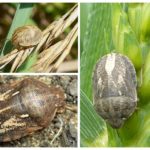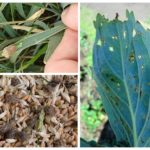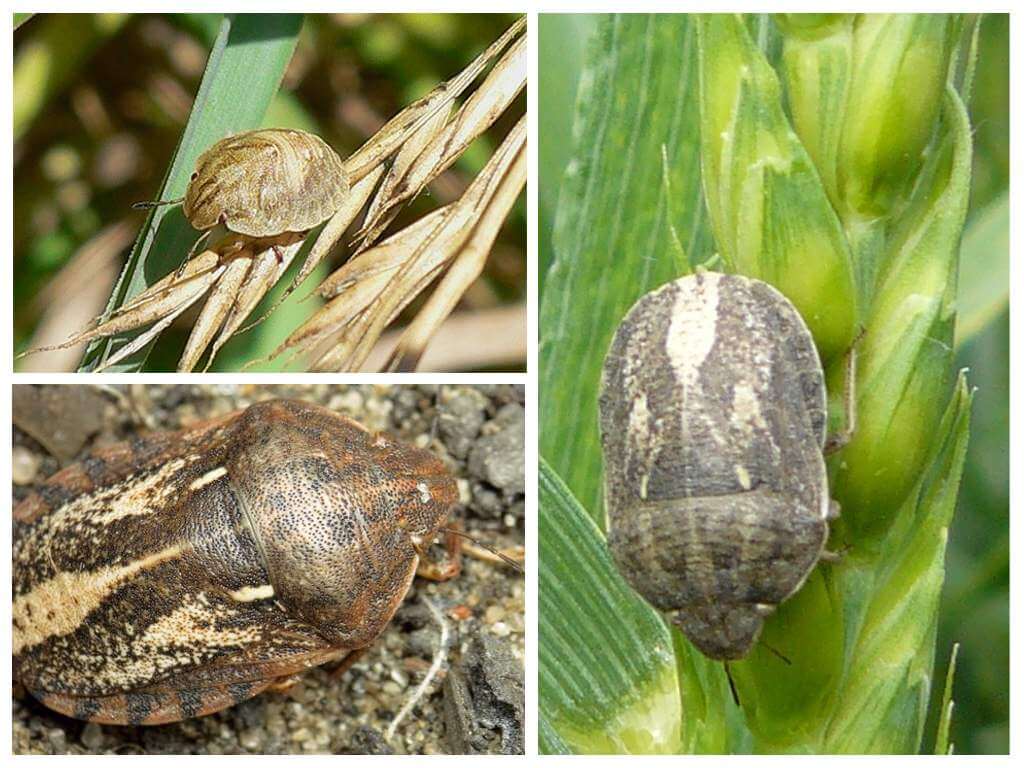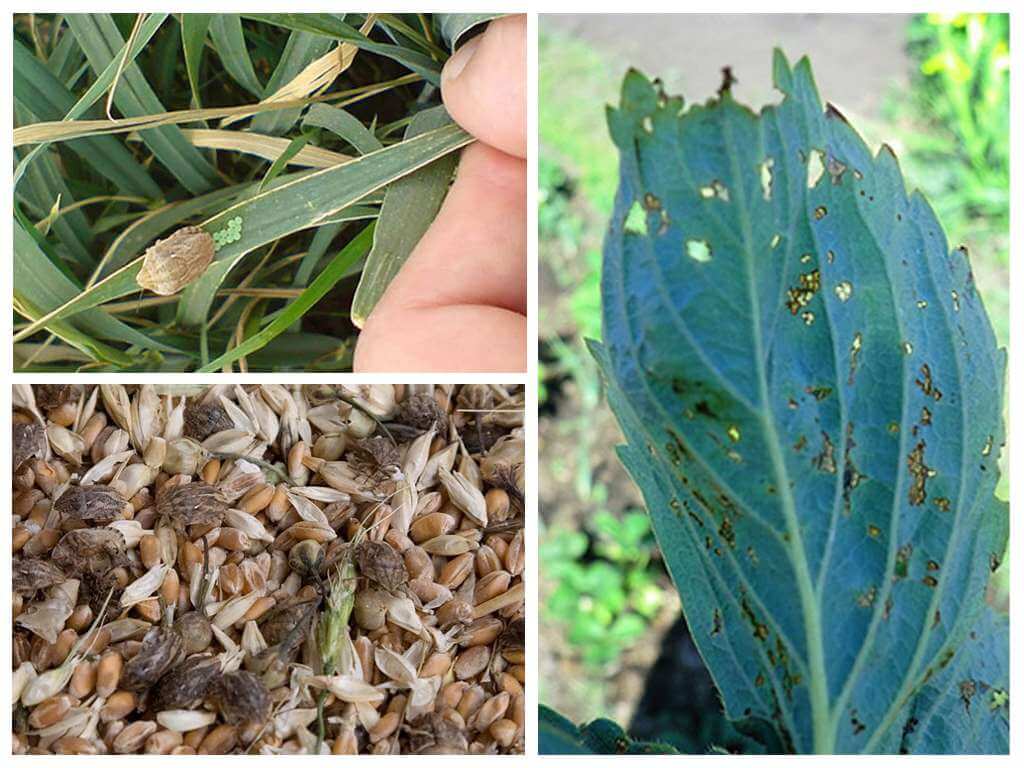Bug harmful turtle
Content
- Bug
- Bug
- Bug harmful turtle
- Remedies for bedbugs
Almost all species of bedbugsinhabiting our planet are parasites. Many species parasitize animals and prefer blood, but some feed on the sap of young plants. Bug turtle is not a bloodthirsty species, but is the worst enemy of man and causes enormous harm to his activities. The most susceptible to bugs are cereals, and if effective measures to protect the crop are not taken in time, the economic damage will be noticeable.
Features of the species, habitat
Bug harmful turtle belongs to the family of shushnikov-turtles. This name was given to this species for appearance, since the body of the insect looks like a little turtle, and the relief and color of the elytrice resemble shell. The size of an adult individual varies from 10 to 15 mm in length.
In everyday life, this species is classified as a grain bug. The popular name is due to the gastronomic preferences of the parasite. A bug bug photo is presented below.
Bugs of a turtle belong to the order of hemiptera and have two pairs of wings. Pests fly well and move easily between feed bases.
Interesting!
In search of food, the bug turtles can overcome tremendous distances, migrating not only between fields, but also administrative regions.
Parasites show their activity with the onset of stable heat, when the temperature reaches 15 degrees above zero. The sex of the future insect does not play a role in the intensity of feeding of the larvae. During this period, overwintered individuals begin to actively eat winter varieties of cereals. The bug bug is especially common in wheat, he likes young succulent stems.
After the larvae that have left wintering pupate, a period of intensive mating and laying of eggs begins. Female bugs of turtles lay from 140 to 250 eggs for a short favorable period, which is just over a month.
Interesting!
The harmful bug bug has 14 eggs in the abdomen, which allows her to lay 14 eggs at the same time.
Under favorable climatic conditions, the embryo develops within a week, after which the larva hatches. Its dimensions do not exceed 1.4-1.6 mm. From the moment of appearance and until reaching the mature form, the larva has to go through 5 stages of development. With each phase, the appearance of the young individual more and more resembles an adult insect.
During the growth period, the larvae actively feed and accumulate the mass necessary for transformation into the next stage. It doesn't matter what the bug bug eats, whether it is corn or wheat, but its mouth apparatus does not allow eating solid food. In the early stages of development, the larvae make punctures in the stems of the plants and suck its juices. Older individuals parasitize on the seeds of cereal crops and in order to liquefy hardened grains they inject a special enzyme.
On a note!
Habitat grain bug distributed from the steppe zone to the forest-steppe.The insect is moderately thermophilic, so in the hot months, when the temperature rises to 30-35 degrees, it moves from the fields to the forest edges, parks and squares.
During this period, the pests are frequent guests in homesteads and summer houses, where the bugs are harmful turtle damages corn crops or other succulent plants. By the time the harvest begins, the insects are gaining enough fat mass for a successful wintering and with the onset of cold weather go to sleep.
Danger to humans and animals, harm to agriculture
Despite the fact that the mouth apparatus of all the bugs has the same structure, not every species parasitizes animals during feeding. Bug harmful turtle can not cause physical harm to a person or another member of the warm-blooded, despite their formidable appearance.
On a note!
Sometimes pests accidentally fly into a dwelling, but they do not carry any threat. But taking the shield with bare hands is not recommended, as it releases a special strong-smelling enzyme to scare away birds of prey. Therefore, the insect is often called stink bug.
Shchitniki-turtles harm agricultural plants. Their favorite food is barley, corn, or other valuable cereal crops. Most often parasitic bug bug on wheat. Sometimes during the period of mass reproduction, pests reduce yields by 15%, causing severe economic damage not only to agricultural organizations, but also to private horticulture and household plots.
The bug bug bugs feed on the sap of the plant, for this it pierces the stem or spike and ferments the contents internally, and then sucks it out. The eaten crops are far behind in growth and do not gain the necessary ripeness.
On a note!
Grain damaged by a bedbug loses its commodity value and is practically unsuitable for making flour. The product obtained from the grains infected with enzymes is not suitable for baking, it has a gray color and a strong viscosity when kneading dough. To get high-quality wheat bread, flour should not contain damaged grains.
The main signs of damage to crops bedbug harmful bug are:
- wilting of young shoots in the focus of infection;
- white color ears and shoots;
- the presence on the mature grains of microscopic chips and points at the bite points of the bug.
On a note!
Bug harmful turtle prefers to eat the most valuable and expensive types of crops.
Due to its high mobility, the insect very quickly populates large spaces, increasing its number and, without special protection measures, is capable of destroying crops on vast areas.
Fighting bug bug
There are two main ways to deal with parasitic bugs harmful turtle:
- Chemical, when insects are eliminated with the help of potent insecticides.
- Biological, in which parasitic individuals are destroyed by other living creatures: smaller insects or fungi.
An additional measure of protection against pests are preventive measures and the creation of unfavorable conditions for the life and reproduction of parasites.
The most effective drugs to combat the bug-bugs are:
- Bassoon - intestinal insecticide from the group of synthetic pyrethroids causes a massive death of adults and larvae, which cures infected areas and allows plants to develop normally.
- Alpha tsipi - synthetic pyrethroid, affecting the larvae in any stage.Effective for the treatment of large areas, can simultaneously cure several hectares of cereal crops.
- Aktara - an insecticide from the group of neonicotinoids, which after an hour after treatment slows down the vital activity of the parasites, the bug bug stops feeding and a day later most of the population dies.
The biological methods of combating parasites include exposure to spores of various fungi that lead to infection and death. This method is environmentally friendly. Effective method of distribution in the habitat of turtle-insects of other predatory insects, using bugs as a food resource.
On a note!
To get rid of the bug on the plots you can with the help of some breeds of chickens, each of which is able to peck up to 100 larvae per day. As a comprehensive measure, use early harvest and use special varieties of grass, resistant to parasites.
Bugs are harmful turtles - serious pests that can destroy entire wheat fields of expensive solid varieties. For successful pest control it is necessary to take a whole range of measures aimed not only at the destruction of insects,but also the creation of adverse conditions for their development.













